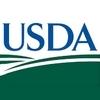Explore all the information on
Poultry nutrition - Other additives
Alternative feed additives have promising importance in broiler production due to the ban on the use of certain antibiotics. The most used antibiotic alternatives in broiler production are phytogenics, organic acids, prebiotics, probiotics, enzymes, and their derivatives. Antibiotic alternatives have been reported to increase feed intake, stimulate digestion, improve feed efficiency, increase growth performance, and reduce the incidence of diseases by modulating the intestinal microbiota and immune system, inhibiting pathogens, and improving intestinal integrity. Simply, the gut microbiota is the target to raise the health benefits and growth-promoting effects of feed additives on broilers. Therefore, naturally available feed additives are promising antibiotic alternatives for broilers.
Ricardo Esquerra, APC's Global Poultry Manager, highlights the return of investment with plasma nutrition and shows the results of different studies presented at IPPE in a wide variety of production scenarios and producer needs. ...
Comments : 1
Recommendations: 3
Conclusions The dietary inclusion of Bacillus amyloliquefaciens CECT 5940 (Ecobiol®), antibiotic growth promoter (AGP) and their combination significantly: Improved feed conversion in broilers compared to the challenged group without feed additives. Reduced footpad lesion and C. perfringens in ileum while providing better uniformity, fecal dropping score, carcass and breast meat yields compared to the challenge...
Comments : 8
Recommendations: 3
We present an efficacy study carried out at the Superior Technical School of Agricultural, Food and Biosystem Engineering, at its Experimental Farm in Catalonia, Spain, where the positive effects of a biosurfactant on the diet of 3,000 Ross 308 broilers are shown, with a slaughter age of 38 days. ...
Comments : 1
Recommendations: 2
I would like to hear from academics and nutritionists about the possibility of using these trace elements in poultry nutrition. Is there any risk related to animal health or human? ...
Comments : 0
Recommendations: 0
I found several articles focusing on the use of strontium ranelat in human health , thus, maybe possible to use in poultry? ...
Comments : 0
Recommendations: 0
.jpg&w=3840&q=75)

MetAMINO® Atlas: Essential Insights for Animal Nutrition Professionals
Suggested link
Joy Campbell (APC) talked about their research on spray-dried plasma and its effects on broiler growth, intestinal permeability and bone mineralization in a heat stress model, during the 8th Symposium on Gut Health in Production of Food Animals in St. Louis, USA....
Comments : 2
Recommendations: 2
During IPPE 2020 in Atlanta, USA, Juan Carlos Rodriguez-Lecompte (University of Prince Edward Island) explained his recent work on essential oils and IBDV, in a study where they evaluated the effects of this additive pre- and post-challenge....
Comments : 3
Recommendations: 1
Context Nutritional strategies that support the immune system, promote intestinal integrity and functionality, and increase tolerance to stress and disease challenges are of interest to the poultry industry. In addition, early nutrition has been recognized as an opportunity to further advance nutritional practices and improve overall performance and the health status of commercial broiler flocks. For nearly four decades, ample information has been published on the use of...
Comments : 0
Recommendations: 2
Plant extracts do not affect probiotic bacterias as AGPs do, told Juan Diaz Carrasco, R&D in Poultry Health, INTA, during the 2019 Multi-State Poultry Feeding and Nutrition Conference and Silvateam’s Technical Symposium.
...
Comments : 1
Recommendations: 2
Makenly Coles (University of Arkansas) discussed the results of her research regarding this drug as an option to control disease incidence, during IPPE 2020 in Atlanta, USA....
Comments : 0
Recommendations: 0
Sandro Cerrate (Poultry Nutritionist Consultant-Credinser) discussed diet formulation and feed conversion, during IPPE 2020 in Atlanta, USA....
Comments : 0
Recommendations: 5
Maria Teresa Capucchio and Elena Colombino (University of Turin) shared the stage to present two studies on the benefits of insects as a protein source on animal feed, during the 8th Symposium on Gut Health in Production of Food Animals in St. Louis, USA....
Comments : 1
Recommendations: 3
Stresses in poultry production Commercial poultry production is associated with various stresses leading to decrease of productive and reproductive performance of growing chickens, parent birds as well as commercial layers. In general, there are four major types of stress in poultry industry: technological, environmental, nutritional and internal stresses (Surai and Fisinin, 2016a; 2016b; Table 1).In fact, a list of...
Comments : 1
Recommendations: 1
Over the past decades, genetic improvements have stimulated broiler production resulting in birds weighing ± 3kg in 42 d. To reach this genetic potential, the absorption and digestion of nutrients and according morphological and functional development of the small intestine in the early life must be impeccable. Before hatch, uptake of nutrients by the chicken embryo is limited but rapid increase in villus length and formation of intestinal crypts, have been reported close to hatch and...
Comments : 1
Recommendations: 3
Ryan Arsenault (University of Delaware) explains the benefits of using postbiotics in poultry intestinal health, during the 8th Symposium on Gut Health in Production of Food Animals in St. Louis, USA....
Comments : 1
Recommendations: 7
Christine Vuong (University of Arkansas) discussed possible prophylaxis to ameliorate blackhead disease in poultry, during the 8th Symposium on Gut Health in Production of Food Animals in St. Louis, USA....
Comments : 0
Recommendations: 0
Victoria Hansen (USDA) shared her research on short chain fatty acids as a promising feed additive to mitigate coccidiosis in poultry, during the 8th Symposium on Gut Health in Production of Food Animals in St. Louis, USA....
Comments : 0
Recommendations: 1
Introduction Local chickens constitute a majority of the estimated 170 million poultry birds found in Nigeria and contribute substantially to annual egg and meat production (> 90%) for family consumption and for sale (FAOSTAT 2012; Khobondo et al 2015). In most developing countries these birds are mainly managed extensively in resource-limited/poor or rural households and thereby contribute substantially to their food security. However, such local...
Comments : 0
Recommendations: 1
INTRODUCTION Awareness about the importance of maternal diet on offspring health is increasing. Maternal nutrition is being studied in livestock species as a way of improving offspring growth and production (Rehfeldt et al., 2011; Long et al., 2012; van Emous et al., 2015b). The poultry industry is constantly working to increase carcass yield and obtain a fast growing broiler, and manipulation of maternal diet can be one way of increasing broiler performance (Calini and Sirri,...
Comments : 1
Recommendations: 0






.mp4&w=3840&q=75)
.jpg&w=3840&q=75)








.jpg&w=3840&q=75)


























